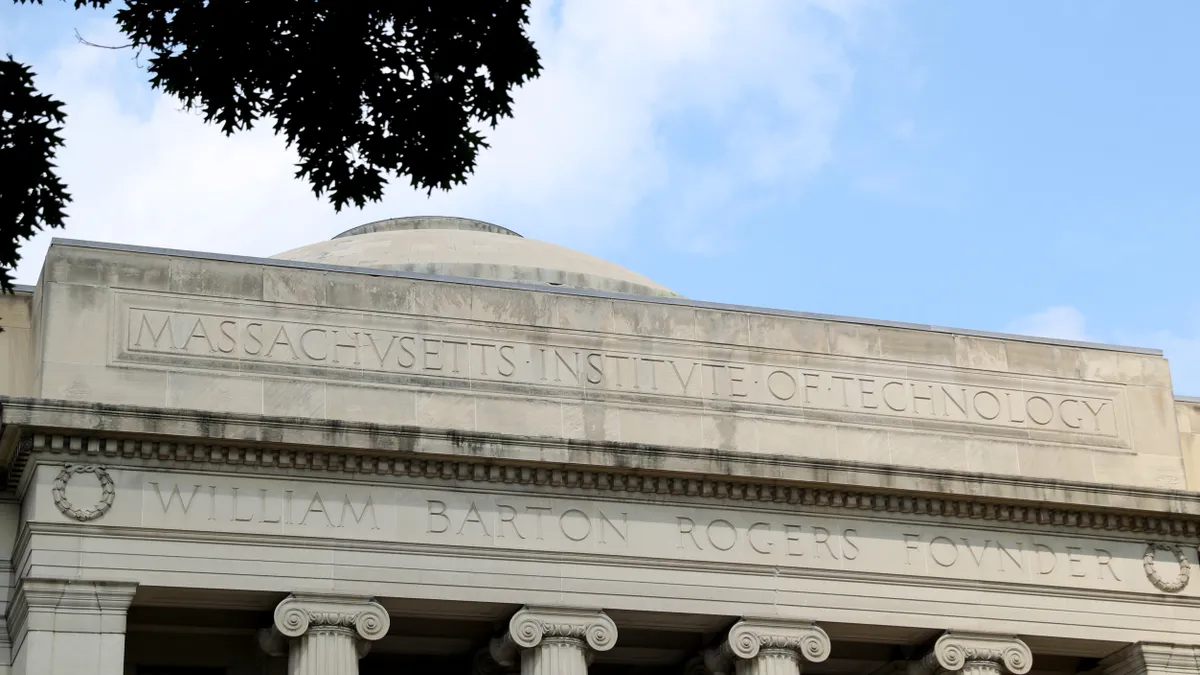CHICAGO — Buzzwords like digital transformation get thrown around at industry conferences to describe the high-level technology goals of many colleges and universities today.
But the process by which that change comes about can't be so neatly summarized. The work of shifting an institution's technology priorities is messy. And institutions often look to those a few steps ahead of them for advice on how they got through it.
To help, education technology leaders at this year's Educause conference parsed their own processes for digital transformation.
Here's what they said.
Create a culture of curiosity
Bringing an array of voices to the table, and setting the conditions for them to challenge and debate each other rigorously, is key, said Southern New Hampshire University's (SNHU) executive vice president of technology and transformation, Thomas Dionisio. "A lot of experimentation can happen in the conference room … before you actually start building anything," he said.
Encourage naysayers — for the most part
Disagreement can be an important part of that debate. Often "you get a lot of really good ideas by somebody who puts the brakes on a little bit because it forces you to focus and really think about why are we doing this and what are we doing," said Sarah Bauder, chief transformation officer at the Pennsylvania State System of Higher Education (Passhe), during a panel on digital transformation that included Dionisio.
Test, test, test
Dionisio's team tries to bring ideas in as "what we might say as crummy" form and improve them through experimentation. That requires leaving the people working on that testing "enough runway to advance, but then to bring them back to be challenged and quizzed by other teams," he added.
Protect the project
Even so, innovations need time to incubate, said Vince Kellen, chief information officer at the University of California, San Diego, in a separate panel about digital transformation.
"We shield them from the instincts in the organization to want to convert those to production prematurely or to otherwise rationalize it away," he said. That includes defending the people working on such projects.
Make it safe to fail
Putting up that guard can encourage people to experiment and risk their idea not panning out. That has been important for the 14-institution Passhe system, which is in the process of an overhaul to address financial viability issues. As part of that process, Bauder said, the system is running a range of pilots and experiments to help it decide how to move forward.
"In these pilots, we're saying this is a safe place to fail. What we find out is people, including me, fall in love with their ideas, and so at the point you know you probably should bail, you go 'Oh maybe just one more little push'" will get you to success.
SNHU's innovation lab, Sandbox, embodies the idea of failing fast. "Even though it's just a physical space, the ... mantra of it seems to allow people to feel a little more freedom in terms of their ability to say things, do things and, you know, challenge the status quo in many cases," Dionisio said.
The lab's work with the university includes evaluating new technologies and potential partnerships.
But know when to kill them
Failure isn't often black-and-white, Dionisio noted. "It's a question for us [about] how much impact do we expect this particular initiative to have and is it sustainable, and will it hit that impact and does it get us to a place that truly is transformational compared to where we are today?"
Being able to make those calls is important, he added, "because it's only by doing that that you preserve the capacity to invest in going into those other things."
Break down silos
Streamlining the processes of 14 institutions while keeping them differentiated has been a challenge, Bauder said. In addition to developing a shared mission, goals and metrics, and combining infrastructure around IT, data, finance and HR, the system has also needed to implement shared services. That has been a point of friction.
"As I was traveling through all the campuses, the fear of all this homogenation" and questions about how each institution is different rose to the surface, she said. "What's interesting is homogenation leads to differentiation because now you actually have visibility into information you never had before."
Shared services, she added, "is what really creates differentiation in the end."
Know the end game
Dedicating a team of two people to focus on these priorities has "really transformed" what Fresno State can do to build a culture of innovation on campus, said its chief information officer, Orlando Leon.
And while financial trouble necessitated the overhaul for Passhe, that shouldn't be the driving factor of digital transformation for institutions broadly, Bauder said.
"It's very easy to put the financial side in the driver's seat and say financing is going to drive us," she said. "But really the business needs and the student need to be on the driver's seat and finance is on the gas pedal, and so it's just the accelerator."


















